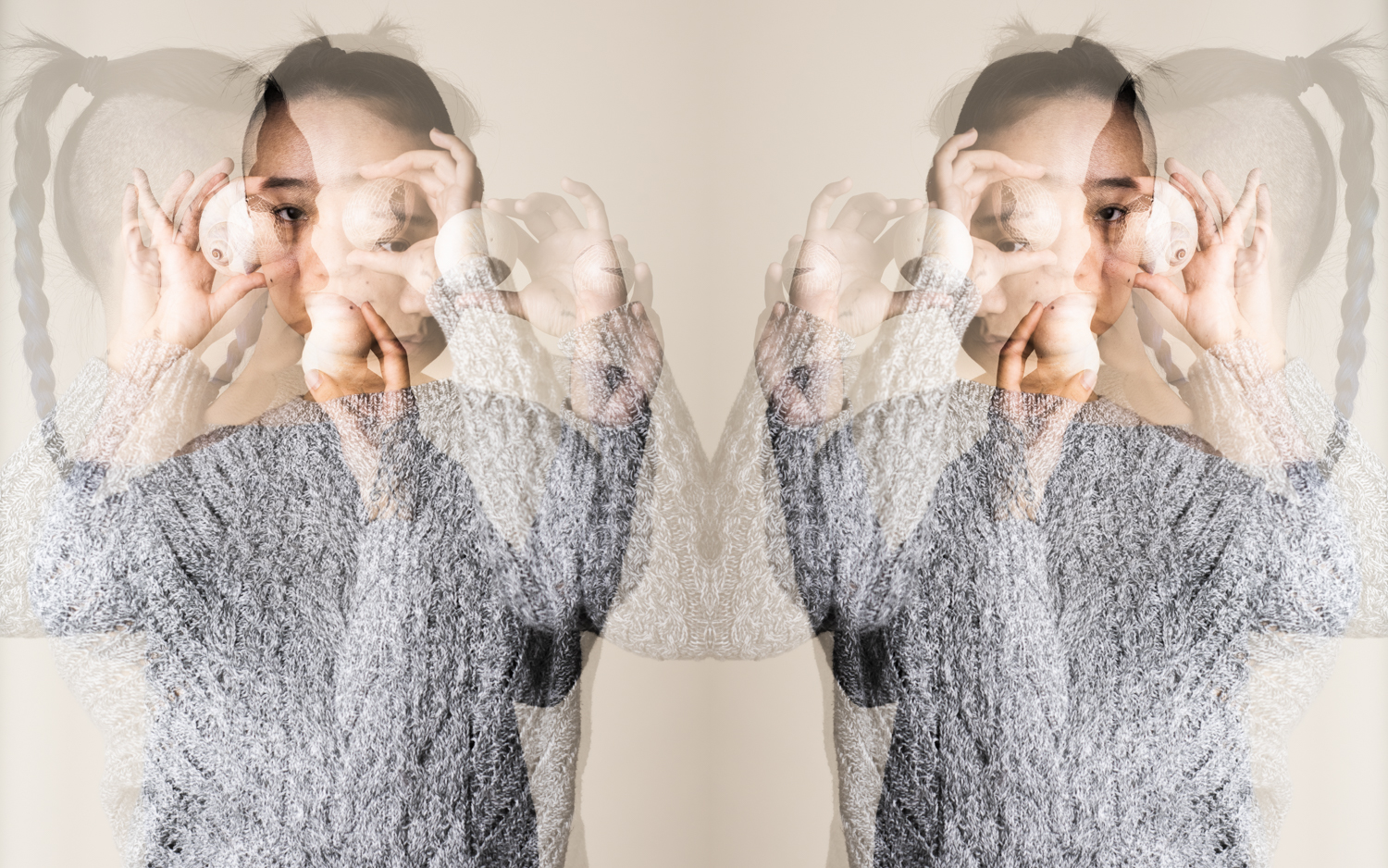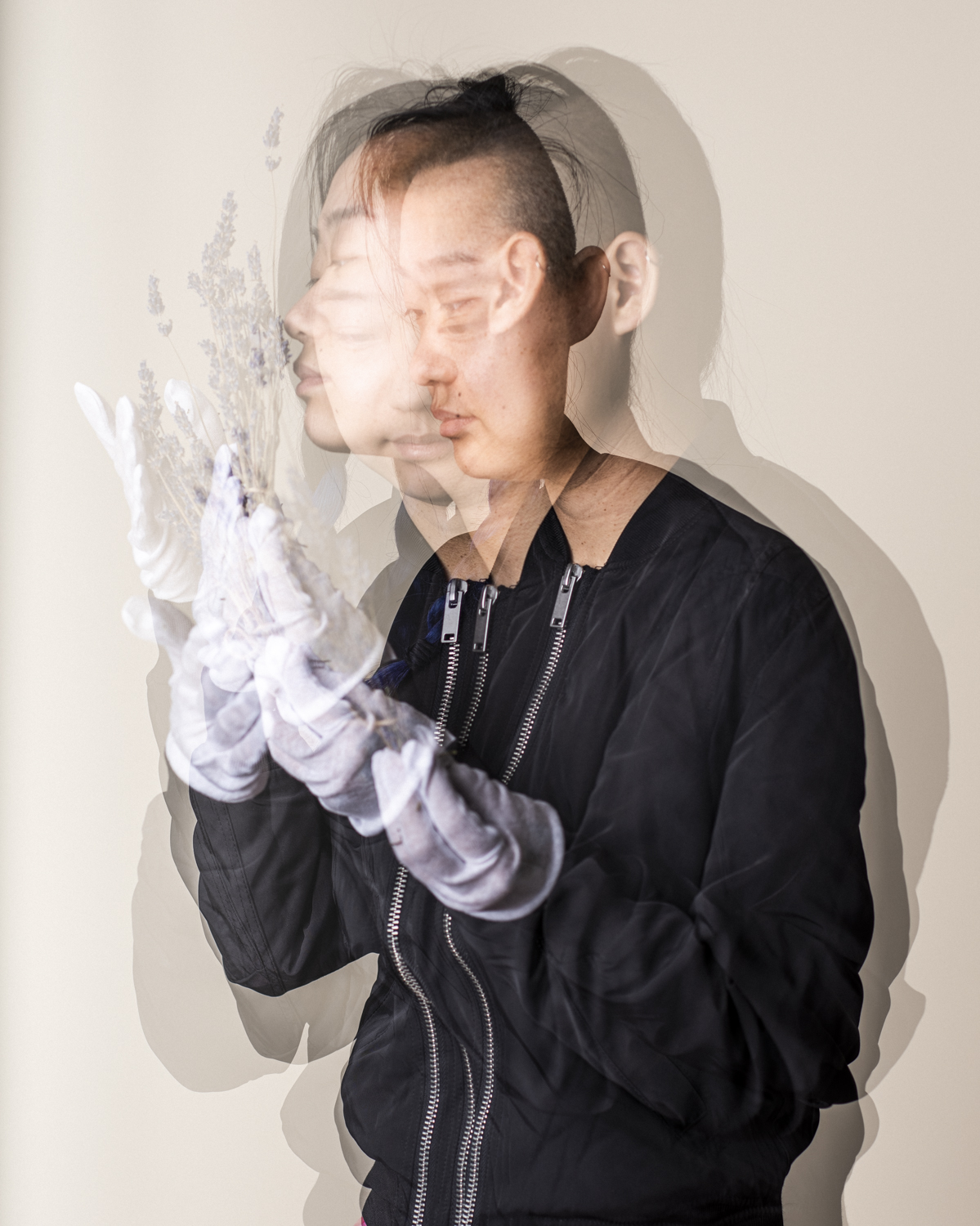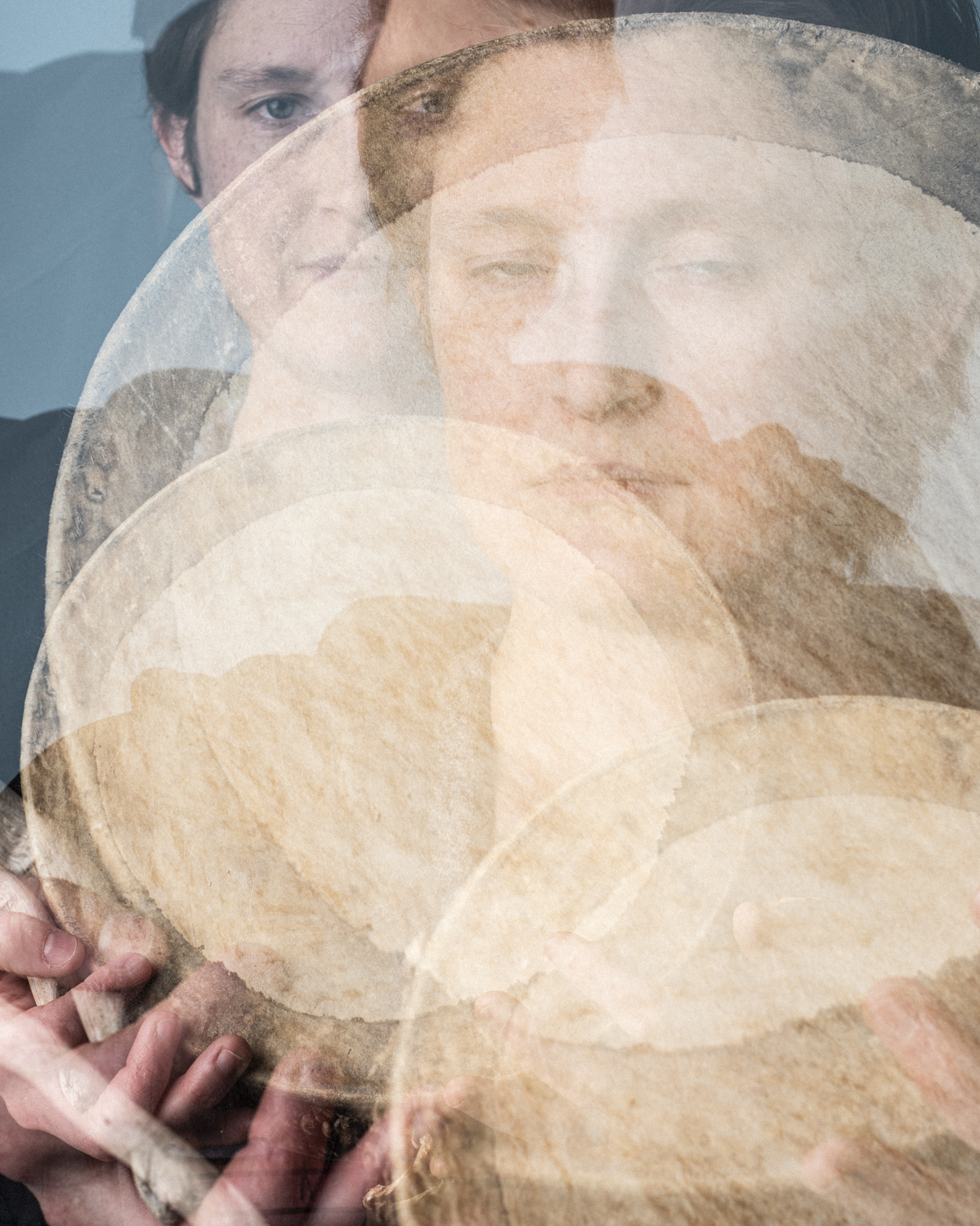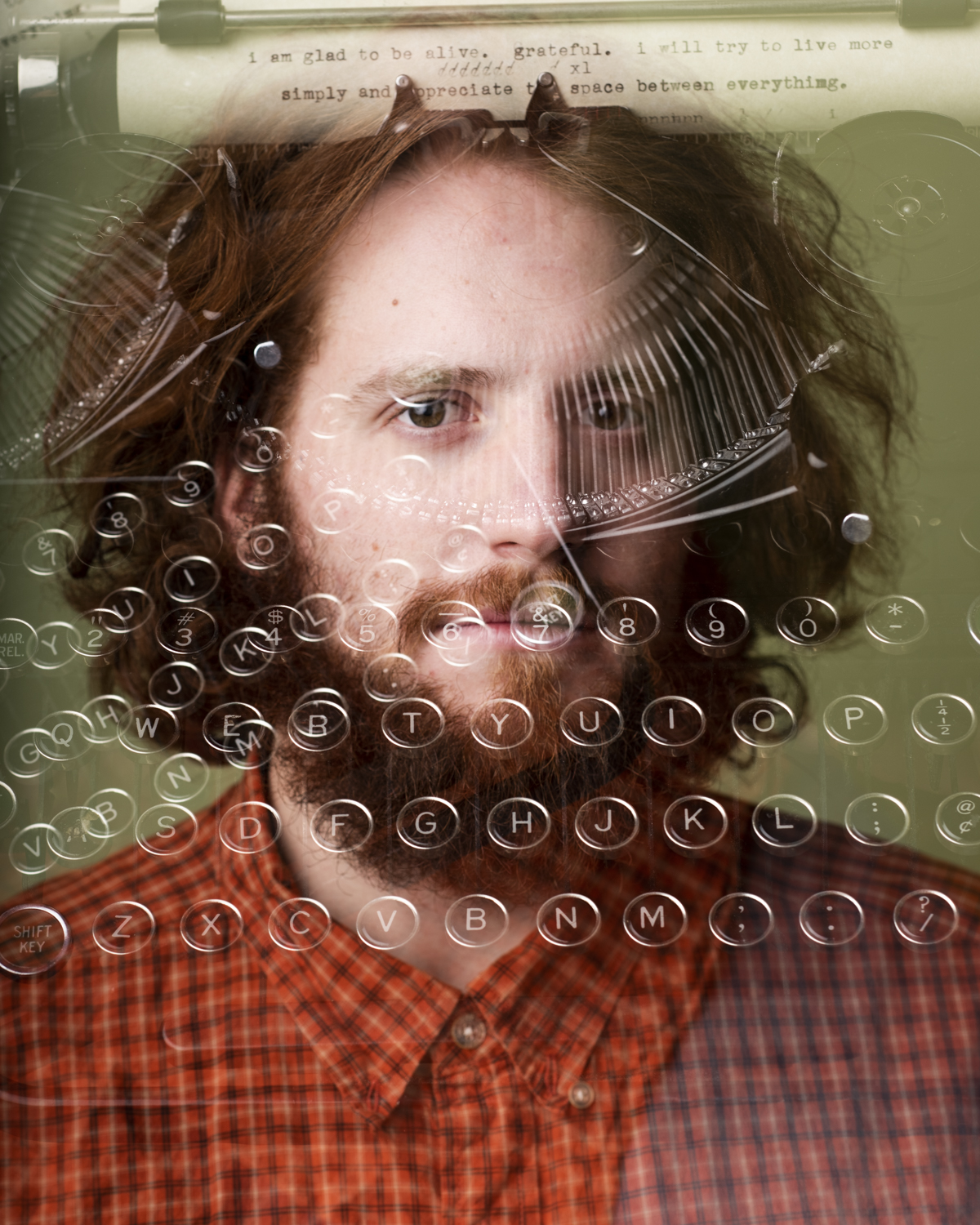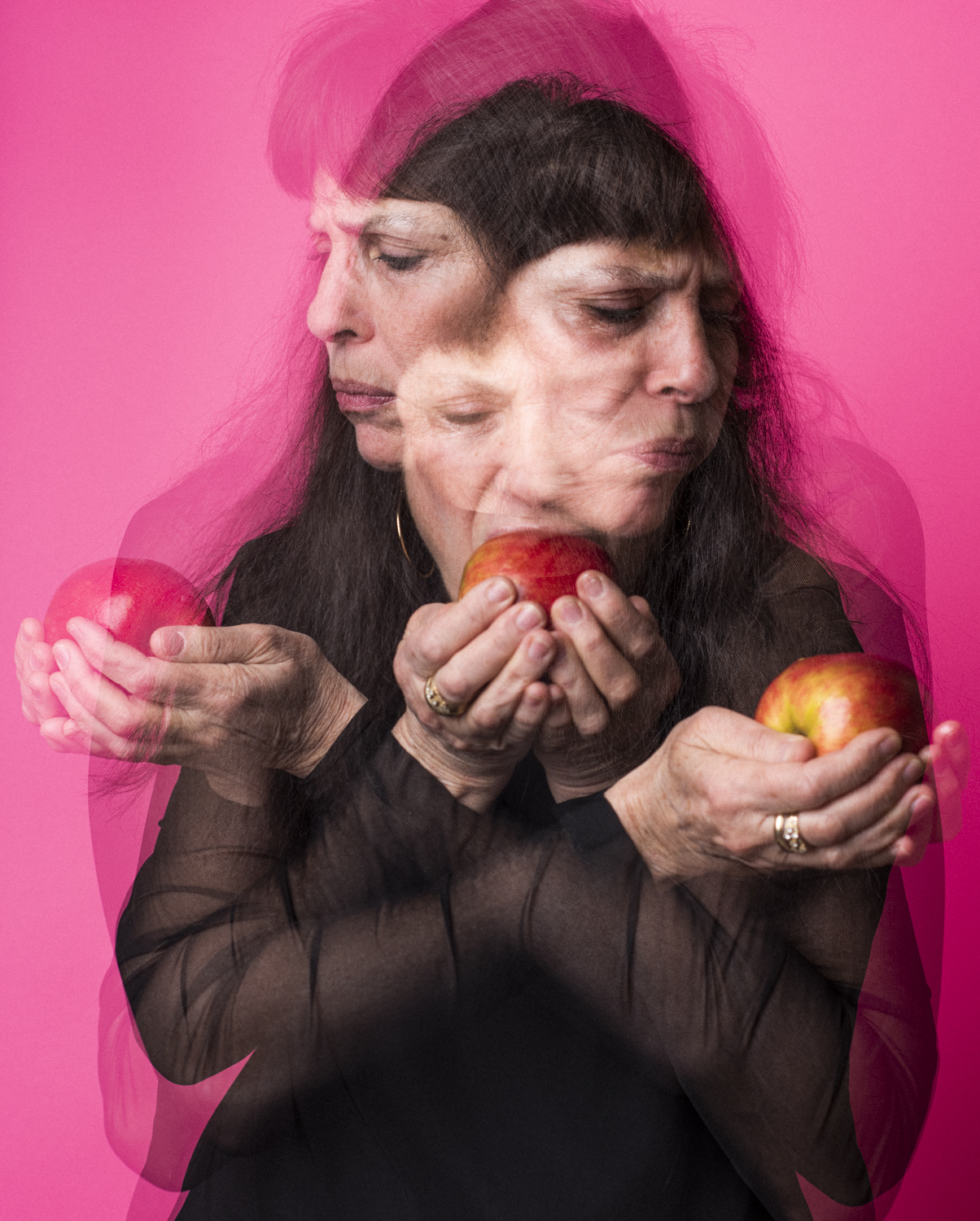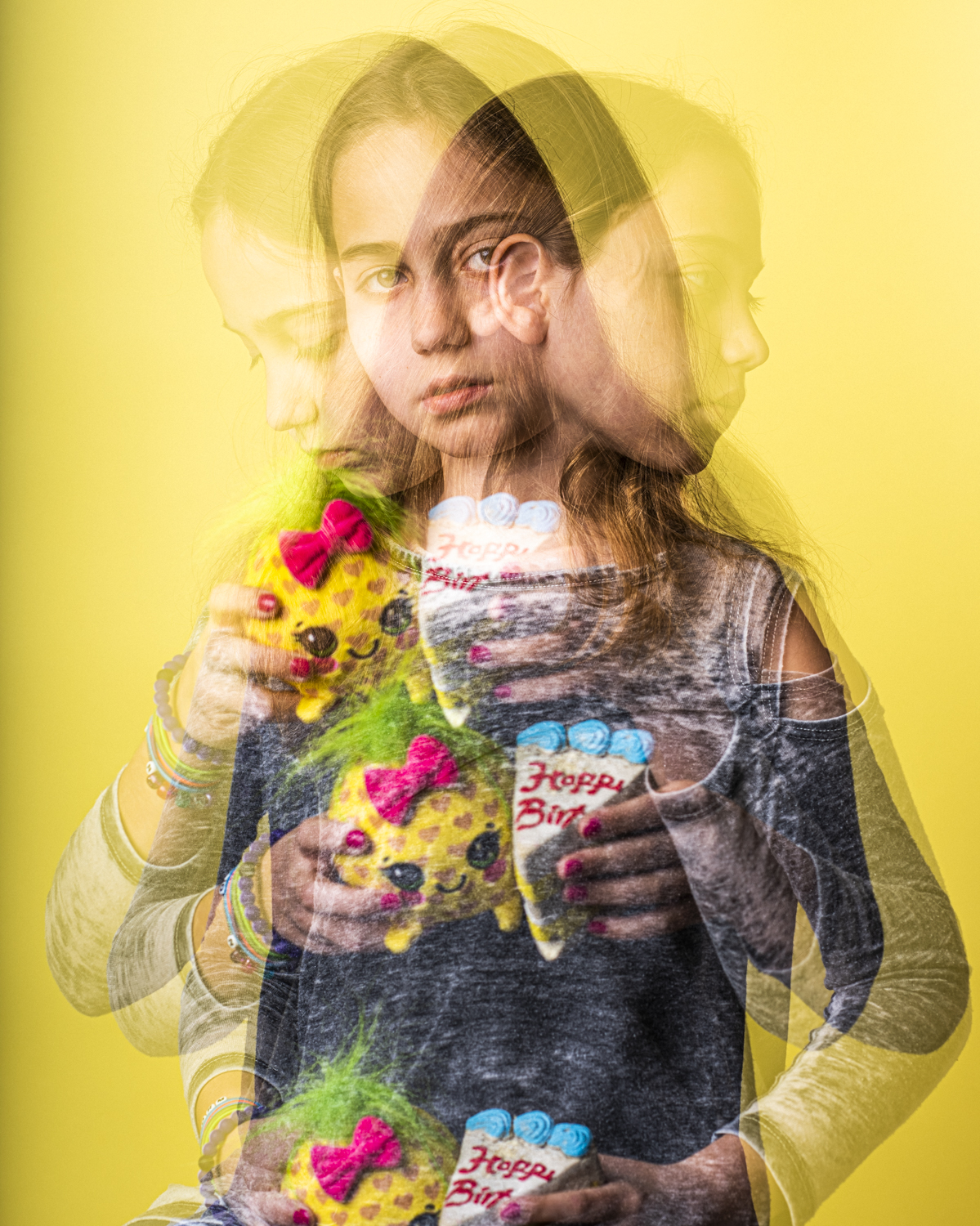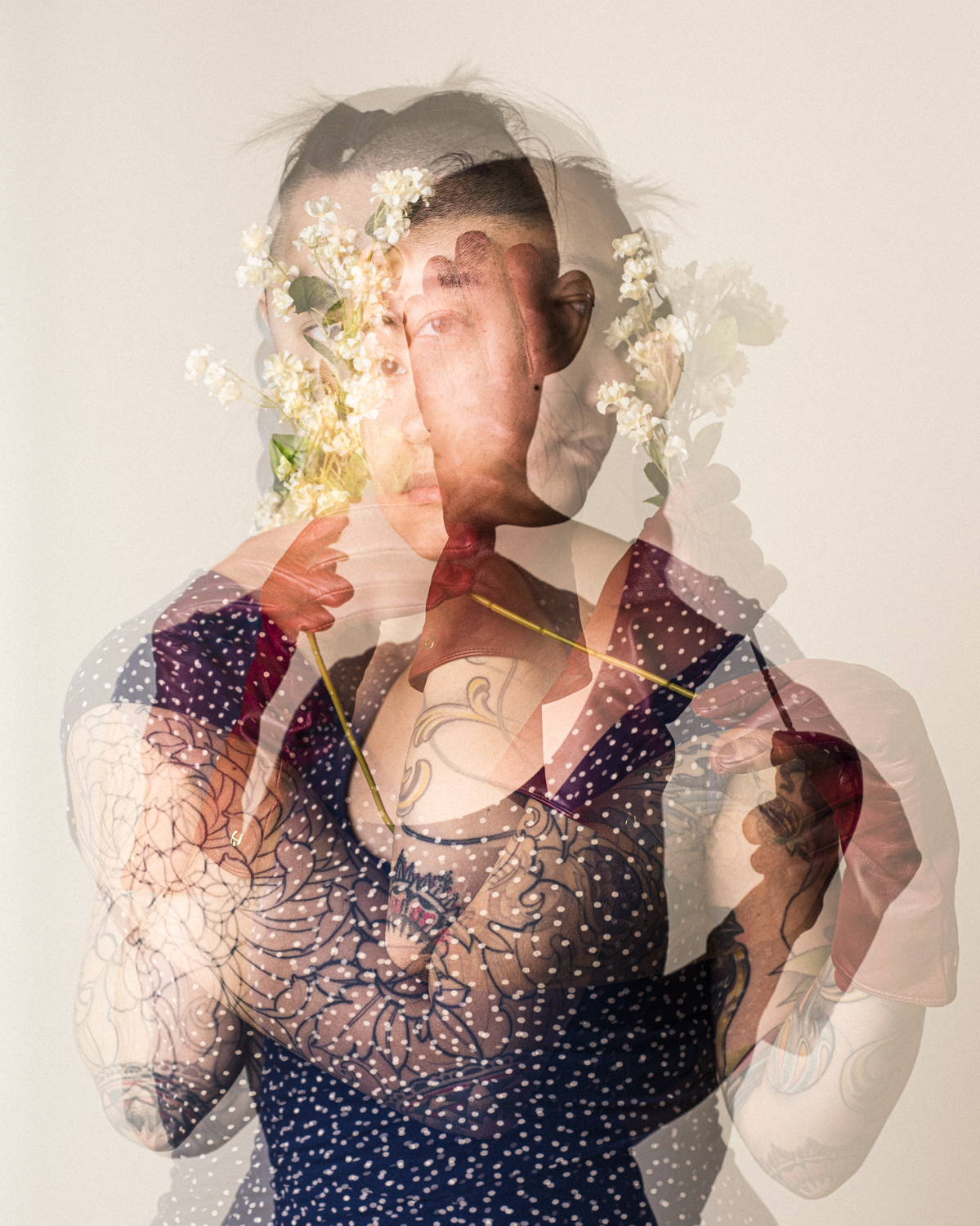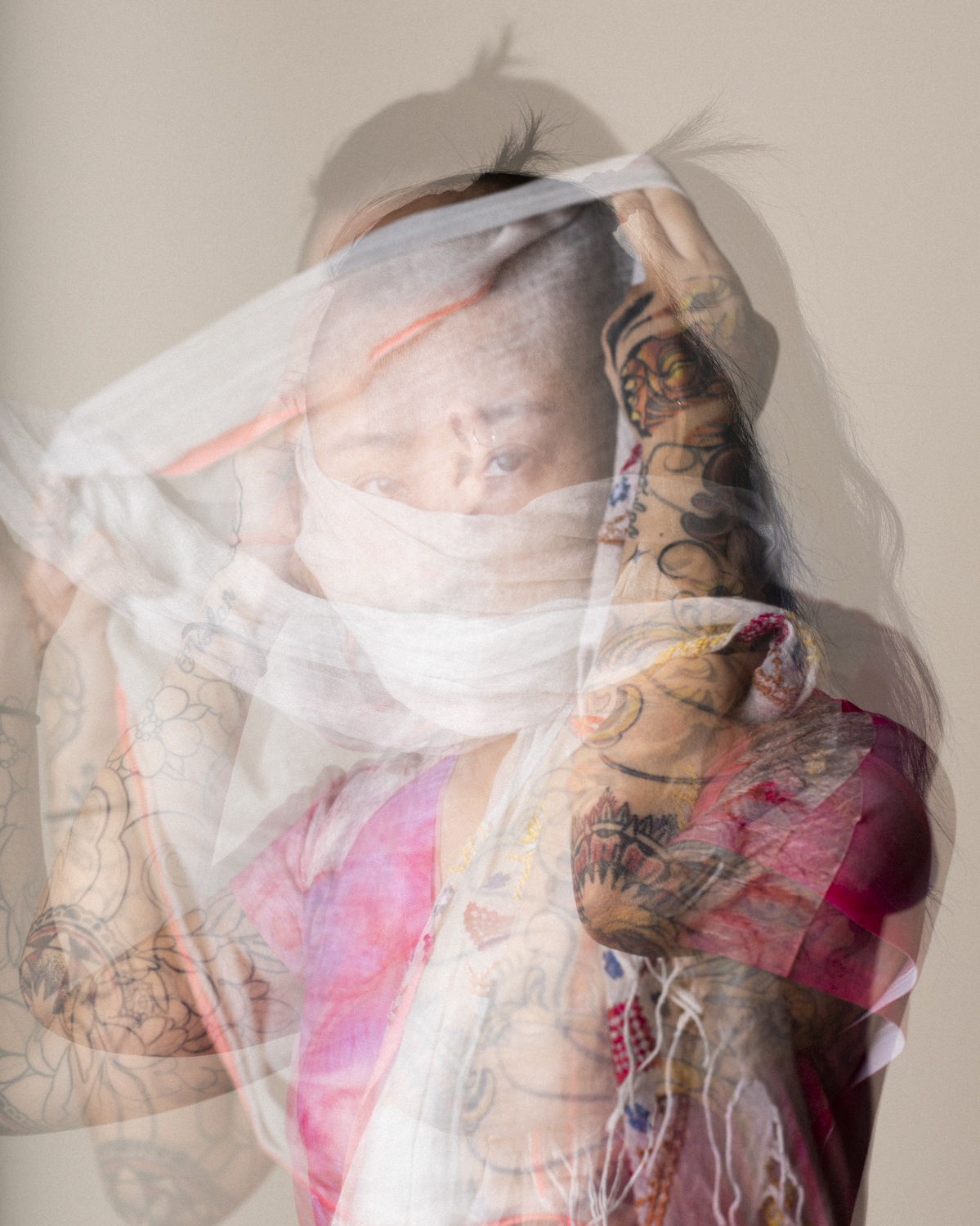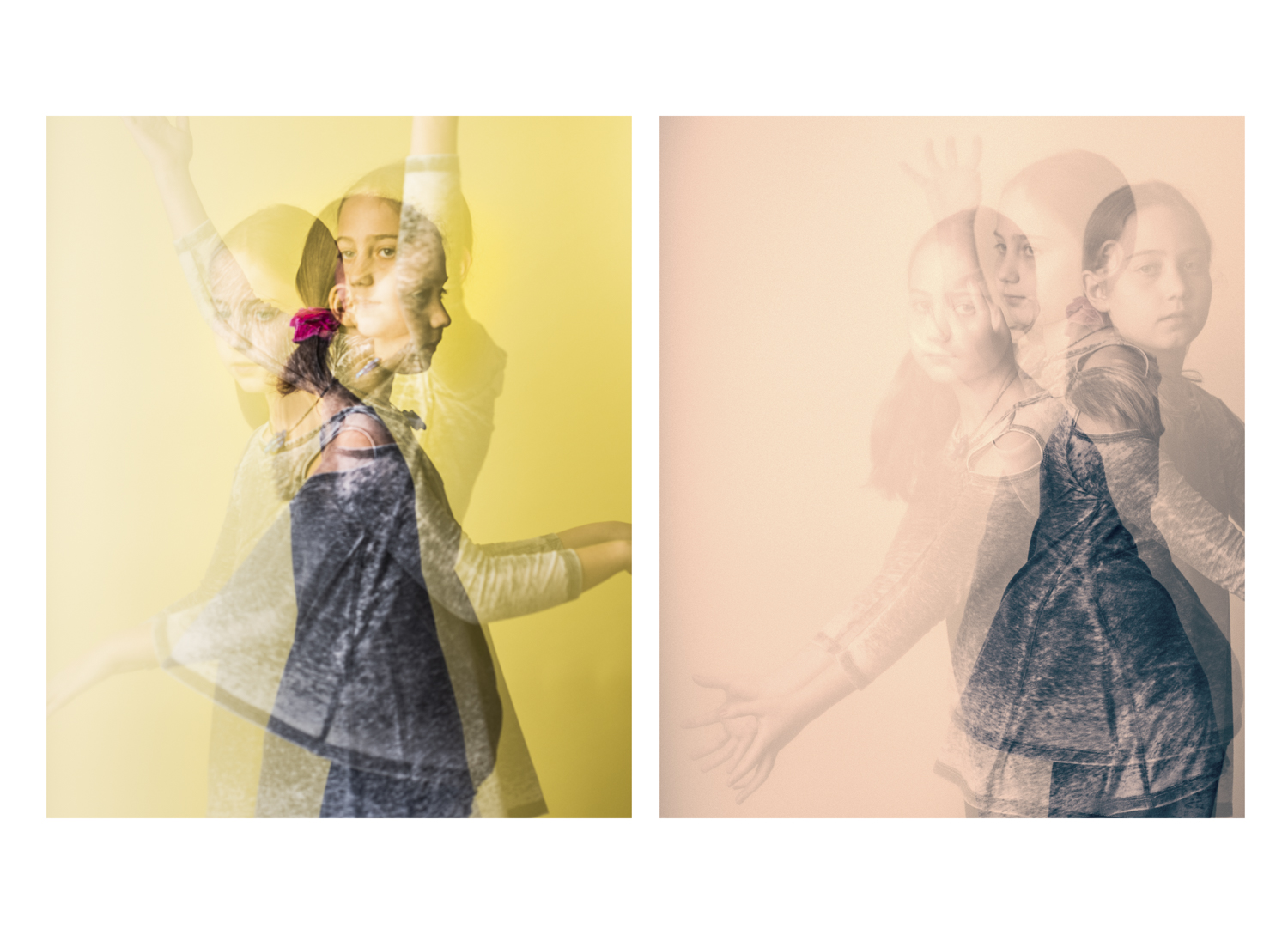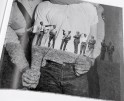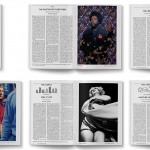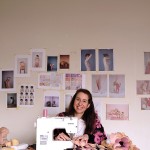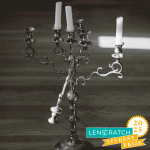Digital Mediations: Jari Poulin: Senses in Animate
Having observed Jari Poulin’s artistic and photographic evolution over the past ten years, I constantly marvel at the underlying themes that consistently permeate her projects. Her recent effort with Senses in Animate reimagines her earlier studies of dance and motion by incorporating the use of multiple exposures in portraits to express emotional fluidity and transience. She continues to explore the psychological and physical boundaries that movement offers while also using the motion of the body to conceal and camouflage human fears and desires. Ironically, the project came to fruition during the onset of the pandemic just as Jari had made the exciting choice to present the work in a variety of material ways. She incorporates her ethereal portraits in a series of cubes of various sizes that can be mixed and matched in a tactile manner to transform the visual impact. Furthermore, she employed 3-D technology to allow gallery visitors to explore her portraits in novel iterations. Thus the movement of the cubes and the motion triggered in 3-D glasses confirm her unique vision in pursuing novel photographic and sensory means to explore motion and emotion.
Jari elaborates on these themes in her artist statement about the project in describing a universe where billions of images are created every week, but the human eye seemingly has become inured to the single image. With the inundation of imagery on the web and media we have lost attention. This project provides the viewer with a reason to stop, inspect, and search the image for meaning. She complicates the image and challenges the viewer’s perception with overlapping images that intersect, confuse and relate unexpected moments of poignancy. The approach began with curiosity about how a portrait would look and feel when made while subjects were activating the five senses by handling objects that appealed to them.
This series of portraits features subjects experiencing a sensory moment with an object of their choice. Each portrait is captured in three, overlapping multiple exposure frames. The images capture overlapping moments of time, sensation, reaction and movement residing in a single image. Each subject was asked to choose objects from a large table filled with choices of fruit, candy, drinks, vessels, musical instruments, gloves, books, candles, textural fibers, and more. Over the course of each session, subjects were allowed to choose various items to explore in front of the camera in a relaxed environment. The camera recorded the sensory experience as it occurred over a period of a minute or less.
The physical exhibit features wall art, installations of small and large block systems that have the potential to create 6 complete portraits, one on each of the cube’s six sides, and multiple combinations of various portraits that can be playfully interspersed. Additionally, there is a stereoscopic work that uses chromatic color opposites to achieve a 3D effect when wearing 3D glasses (provided). Finally, there is a magnet board that allows a user to solve the visual puzzle as well as deconstructing it into new possibilities.
With a parallel to 20th century cubism, the result is that many of the portraits are abstracted and even disorienting as they illustrate the overlapping images of the subject experiencing nearly simultaneous sensations/reactions. Ultimately the viewer must decide how to enter into the image and explore the various layers and depths. The mental challenge to these images is the aspect that invites the viewer to participate and engage in the image, to stop, to investigate and to ask.
Your earlier career and work as a dancer has provided you with an interesting baseline from which your photographic journey has evolved. When first we met, you were photographing dancers in various iterations and you moved on to exploring those early images in various alternative photographic processes. The body in motion continues to be a theme in your latest work even as you make the transition to more material representations. Tell us more about the origins of this powerful influence in your work.
As a former dancer and choreographer, I see the world in terms of movement, rhythm and story. They are so fundamental to me that I barely notice I am using them in my work in various ways until I step back and consciously evaluate it. For me, moving and motion are akin to being alive, being free, and certainly to expressing myself. In my earlier work called Dance/Memory I was working on trying to capture the ephemerality of dance and those moments in a watching a dance that are most visceral or memorable. I photographed that work onstage with the dancers while they were performing structured improvisations that I had given them. I was literally moving and dancing with them. A true morphing of my two loves.
In my newest body of work, “Senses in Animate”, I wanted to capture the subtle changes that occur as my subjects made the slightest movements while engaging with an object of their choice that activates one or more of the five senses. The project was captured in-camera with multiple exposure. Our mind is not capable of seeing all of the fleeting nuances of facial expression that change over the course of seconds or milliseconds, but with a camera and multiple exposure, I was able to make them visible. I enjoy coaching subjects in movement during the sessions and watching them see the images for the first time. They just as engaged as I am at the subtleties of expression, and reaction that are revealed through this process
Your project title, “Senses in Animate” strikes me as a bit ironic. Could you explain the material processes you have employed in creating both the prints and the installation that you used in developing it?
At first glance it does seem ironic, but it is really just a play on words. Rather than “inanimate” which means not alive and not able to move, I chose “In Animate” because the sensory objects, which normally cannot move on their own are thrust into “animation” and have become “animate” by being held, used, moved and activated by the human subject choosing them.
In this project I felt all along that I wanted to create a body of work that was 2D as well as 3D, and which invited interaction with the viewer. Because it is about interaction of objects with the senses, I wanted the viewer to participate as well. So, as well as several dozen large 2D works on paper, I made a variety of 3D work. This included a 6’x7’ assemblage (20) 18” square blocks made of birch that were then covered with prints from the series. Each of the six sides of assemblage created a whole portrait image, but the blocks could be mixed up in countless ways to make various abstracted versions of portraits that combined the eye of one subject, the hair of another, the mouth of another. The idea was that viewers could participate in this with four sets of smaller blocks on pedestals. Unfortunately, COVID hit at the time the exhibit was first shown and prevented the interactivity aspect I had hoped for. I’m eagerly waiting for COVID to be history so this can occur.
Additionally, I made 3D anaglyph images that could be viewed with 3D glasses which I provided to viewers at the exhibit at Gallery at South Hill in Ithaca NY, which is where the exhibit appeared last August under strict COVID rules and precautions. Finally, I made magnetic tiles on metal backgrounds which could be moved around by viewers to create their own abstracted images of a portrait along with mini magnet blocks on metal pillars for viewers to move, explore and create new relationships between the images they built.
What prompted you to move from traditional photographic processes to employing print-making and other material enhancements to your photographs?
I got my start in photography in my high school darkroom but switched to digital photography around 1998. It was a seismic shift. Learning the vast potential of Photoshop was a huge change for me and required years of learning, attending seminars at Photoshop World, and many other venues. After about 10 years of that, I really missed moving my body as all the sitting really got to me. I missed the alchemy of darkrooms and alternative processes, but rather than give up the incredible new potential of the digital darkroom altogether, I decided to take a workshop with Master Printer, Dan Welden, on Solarplate which is a non toxic form of polymer photogravure. It was an amazing experience and I later studied privately with Dan at his studio on Long Island. Dan’s mastery and discipline was inspiring. I was irrevocably hooked on the gorgeous depth and richness that these intaglio plates created when inked and put through an etching press onto gorgeous handmade papers like Hahnemuhle Copperplate 300gsm. From there I joined The Ink Shop Printmaking Center in Ithaca, NY and continued learning there and in workshops with other masters around the country including Don Messec and Ron Prokrasso, both in Santa Fe. Each of these master printmakers had something new to offer and increased my skill sets and ability to creatively combine my printmaking techniques such as intaglio, monoprint, monotype, chine colle, a la poupee. I bought my own Takach press in 2015 and expanded my studio to create a printmaking studio.
Today I do hybrid processes of digital, film, alternative processes such as cyanotype and platinum palladium, and printmaking techniques to create my work. I feel as if I have so many more tools to express my ideas and I’ve grown as an artist and maker. The ways of making are countless now and I’m a kid in a candy store most of the time.
I observed that you are now teaching some of your material techniques in workshops that are selling out at the Maine Media Workshops. How do you explain the increasing interest in the techniques you employ?
My feeling is that these courses are popular because they offer a chance for the artist to use their hands and engage physically with their work and they offer a chance for the artist to think out of the box about what they create and how they are creating it. In a world flooded with billions of images on social media each day, people have become very adept at reading images in an instant and discarding them to go on to the next. Today’s savvy viewer and art collectors are hungry for images that have more to say, that aren’t as easily understood, which challenge them, and especially which are unique or hand made. Images that can be pumped out endlessly on an inkjet printer are often not viewed as interesting or valuable as a piece that shows the hand of the artist and which have a certain tactility and energy imbued in them.
I have been so excited about this new opportunity to teach, share and learn from my students as well. I was asked by Richard Reitz Smith, Director of the Bookmaking Dept. at Maine Media if I would have any interest in teaching some of the techniques and processes I’ve been working with at Maine Media Workshops + College last winter and I jumped at the opportunity. It was deep into COVID isolation and this would be a chance to share with and enjoy the company of other artists. The first course I taught was called “Creating Beyond the Frame, Printmaking in Layers” and I literally spent weeks preparing not only to effectively teach these lab/studio techniques over the internet on Zoom, but how to make it accessible to people in their kitchens or spare bedroom studios. With careful planning, it was a great success, and both 8 week courses sold out well in advance. In this course I teach monoprinting without a press (handrolling), stencils, several photo emulsion transfer techniques, Xerox solvent transfers, collage, hand coloring, and layering techniques for imagery. My goal was to meet students where they were at and to help them figure out how to think “out of the box” to enhance and reinterpret their work with a sense of physical materiality. I’m teaching on campus in Maine this fall for this course and for a separate Solar Etching (intaglio) printmaking course.
I notice that some of your recent projects have social and political themes that are quite powerful. This seems to be a departure from your earlier fine art work. What is behind this shift in expression?
In 2015 I began the MFA program in Visual Arts at Lesley University, and it made a huge impact on me to look deeper, to deal with ideas, and to allow my political and social views to enter my work. I had previously avoided political and social topics in my work. Also, having spent many years building mastery of photographic craft including composition, lighting, subject matter, etc., my work was tied to those precepts and ideals. Ultimately, they didn’t allow me (or the viewer) room to investigate or be challenged by the imagery. When everything in an image is too tightly organized and spoken for, there is no room for the viewer to engage and explore. The program at Lesley pressed me to step out of my comfort zone, to tear down walls, and to reinvent the way I see. Ultimately, I made work that was very difficult for me such as dealing with the crisis of Syrian rebels and their mass deaths by execution at a secret prison in Damascus where they were summarily executed and cremated. The project was called 13,000 Nooses and was a result of research into the political and humanitarian crisis there. My interest in the subject was sparked by an Amnesty International report that had uncovered the secret mass killings of innocent people who were resisting the Assad regime. That is work I would never have been able to conceive of previously.
I have begun work on a new project called “Breaking Point” which is an outgrowth of earlier work I made called “Hear No Evil, See No Evil, Speak No Evil”. In this work I am exploring the effects of the subtle social conditioning and expectations of girls and women to adhere to male generated feminine ideals which include being attractive, sexual, non-assertive, and which perpetuate behaviors that are alluring, and in different degrees submissive to male culture. These social cultures persist globally and affect our ability to be strong in our skin, speak our truth, and form identities that are not driven by social, cultural or male approval. My hope is that these images create a dialogue about the pervasive trends that prevent fully empowered vocal engagement of women at home, in the workplace and in society. These issues often contribute to poor self-esteem and self-image and result in women achieving much less than their full potential.
What’s next on your creative journey?
I am still working on the Breaking Point project and plan on spending lots more time finding exhibit opportunities for “Senses in Animate” work and installations. My plans include more broadly incorporating my imagery with monotypes and intaglio into a future project that focuses on the idea of photograph as object, and all this in installation form that combines some of my theater and dance background into an immersive art experience. Lights, curtain, go!
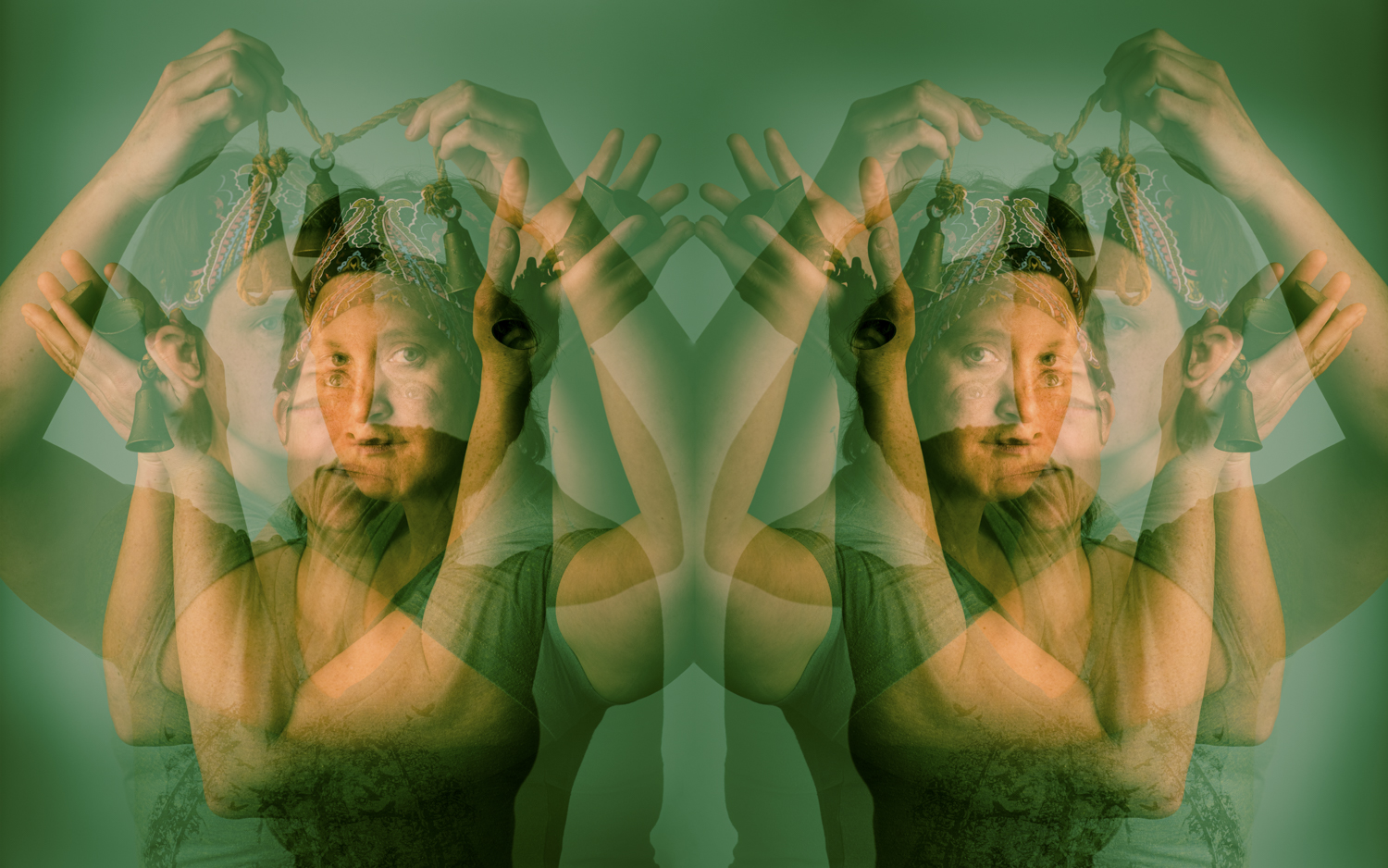
©Jari Poulin, Shiva’s Hands Hold Bells, Stereoscopic 3D image from the Senses in Animate Project. 60″ x 37.5″
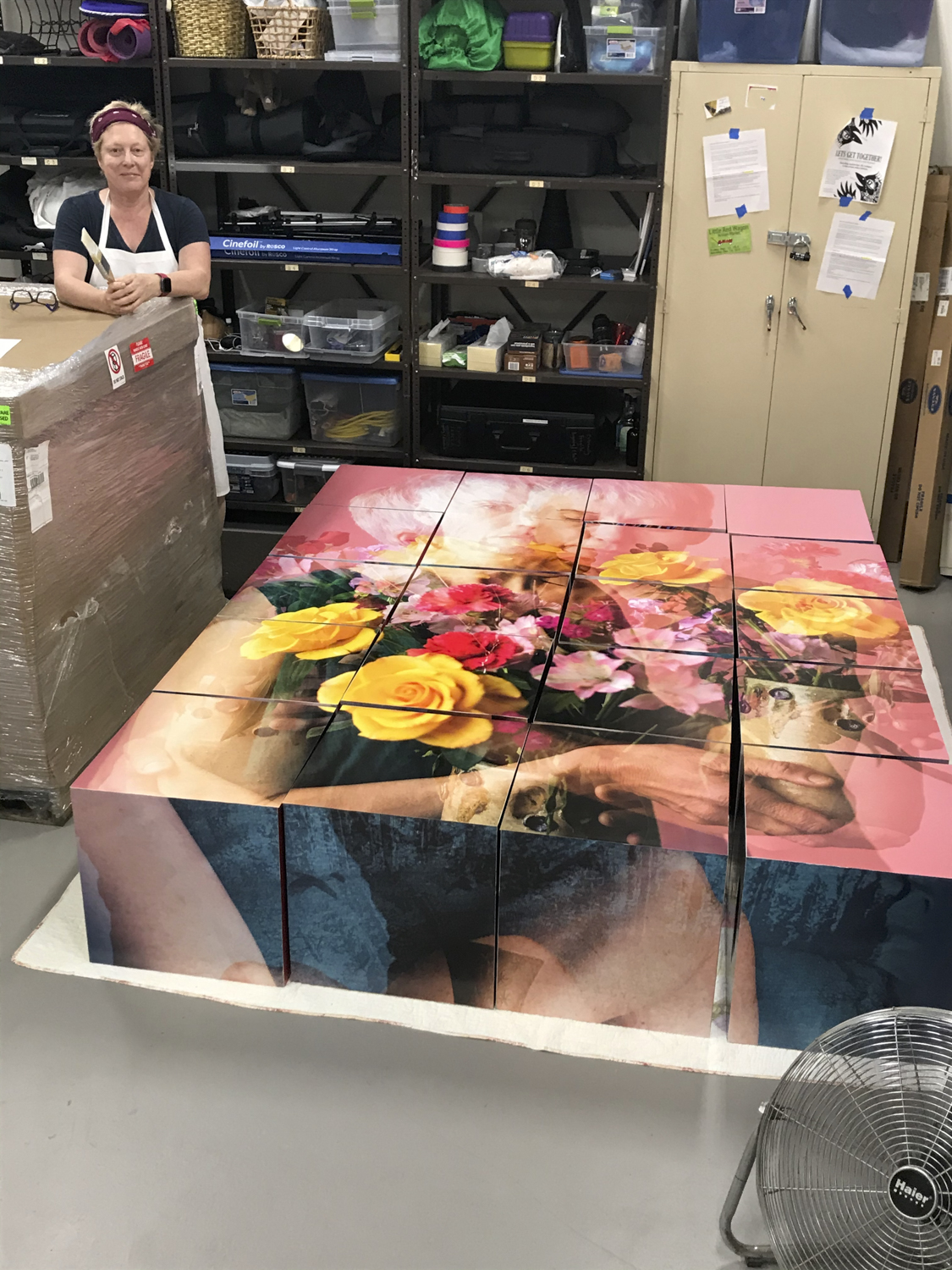
Jari Poulin with her large block installation, Senses in Animate Project, H 7′ x W 6′ Birch Frame Box Construction, Photographic Images, PVA
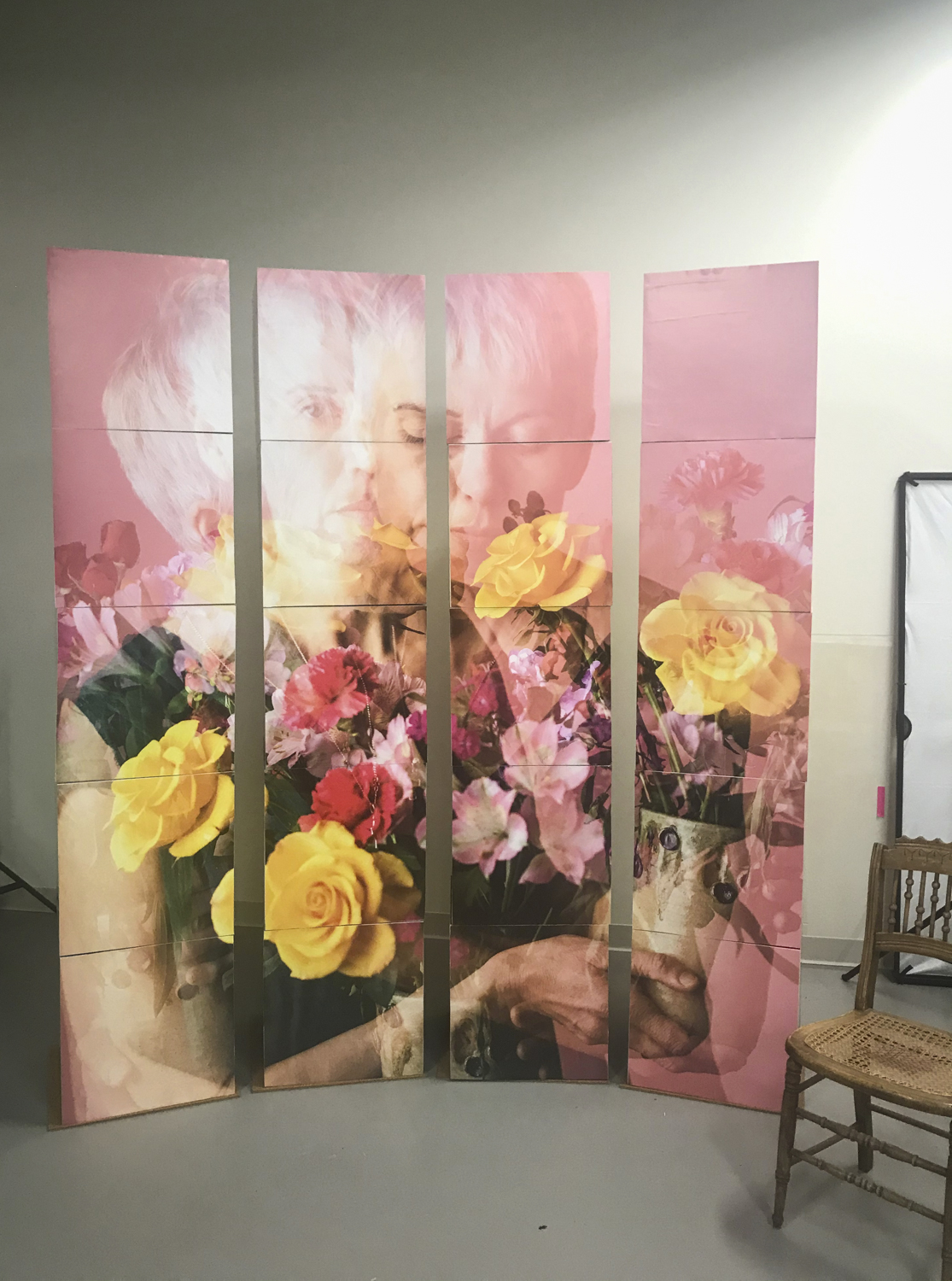
©Jari Poulin, Sensation, Senses in Animate Project, H 7′ x W 6′ Birch Frame Box Construction, Photographic Images, PVA, 6 sides of imagery each making a new puzzle image of a portrait from the series.
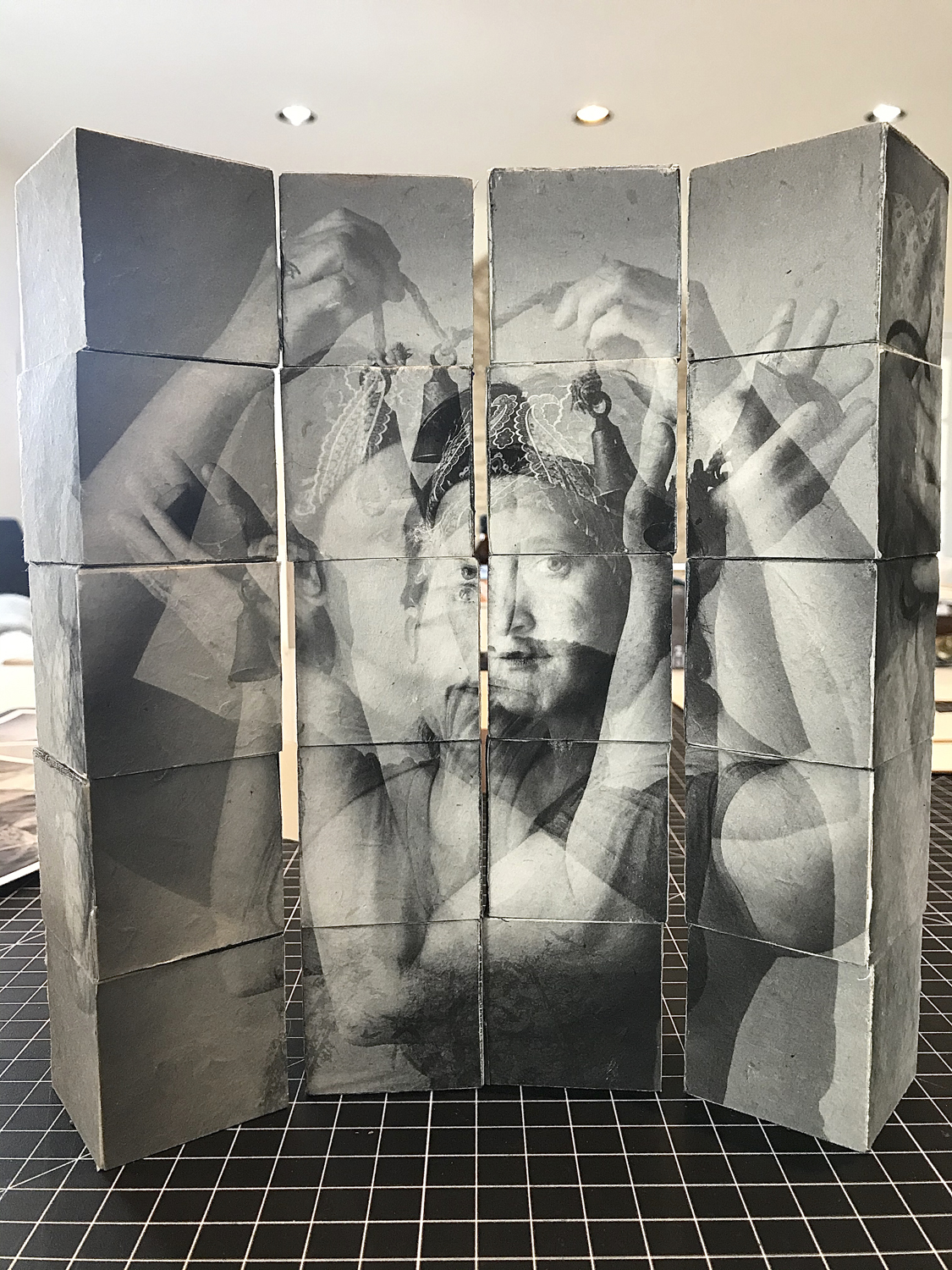
©Jari Poulin, Senses in Animate Project, 8″x10′ table top installation. Norwegian Pine with Photographic Images printed on Lohkta Paper, PVA, 6 sides of imagery each making a new puzzle image of a portrait from the series.
Jari Poulin is an artist and printmaker using photography as the main expression of her practice. She lives in Ithaca, NY and holds her MFA from Lesley University College of Art and Design (formerly the Art Institute of Boston). Her work is portrait based and explores ideas of the ephemeral, memory, and identity. As a former dancer/choreographer her work often features movement and dance or the implied sense of physicality and kinetic energy.
Throughout her various bodies of work, Jari often pushes settled visual boundaries to reveal or conceal information in the images. She is interested in how the brain chooses to see, fill in the blanks, and discard visual information as is common in selective memory. As an artist and fine art photographer, Jari’s images are photographically based, but at times she seeks to challenge traditional notions of the photograph by using various combinations of digital and analog processes, as well as mixed media, installation, and printmaking techniques such as polymer photogravure, monotypes, and stenciling within her practice.
Ms. Poulin is the recipient of many national and international awards including the International Photo Awards (IPA), 15th Annual Julia Margaret Cameron Awards, 7th Worldwide Pollux Awards, Moscow International Foto Awards (MIFA), Prix de la Photographie, Paris (PX3), ND Magazine Awards, Black and White Magazine Portfolio Award Winner, Color Magazine Portfolio Prize, the Ink Shop International Mini Print Juried Exhibit and has been published those affiliated magazines and online galleries.
Her work has been exhibited widely including several international airports, the Bower’s Museum, Griffin Museum of Photography online exhibit, Atlanta Photography Group, PhotoPlace Gallery Vermont, the Lunder Gallery in Boston, SE Center for Photography, Cape Cod Center for Photography, Galerie de la Ferme du Mousseau, Elancourt, France as well as in Limerick, Ireland, and various galleries in Taos, NM, NYC for the Story of the Creative Exhibition, See Me Year in Review Exhibition on Long Island, The Ink Shop Printmaking Center, State of the Art Gallery in Ithaca, NY, and in many venues throughout the Finger Lakes region.
Posts on Lenscratch may not be reproduced without the permission of the Lenscratch staff and the photographer.
Recommended
-
Ricardo Miguel Hernández: When the memory turns to dust and Beyond PainNovember 28th, 2025
-
Pamela Landau Connolly: Columbus DriveNovember 26th, 2025
-
KELIY ANDERSON-STALEY: Wilderness No longer at the Edge of ThingsNovember 19th, 2025
-
Jackie Mulder: Thought TrailsNovember 18th, 2025
-
Accidental Evidence: Mike Mandel and Chantal ZakariOctober 22nd, 2025

